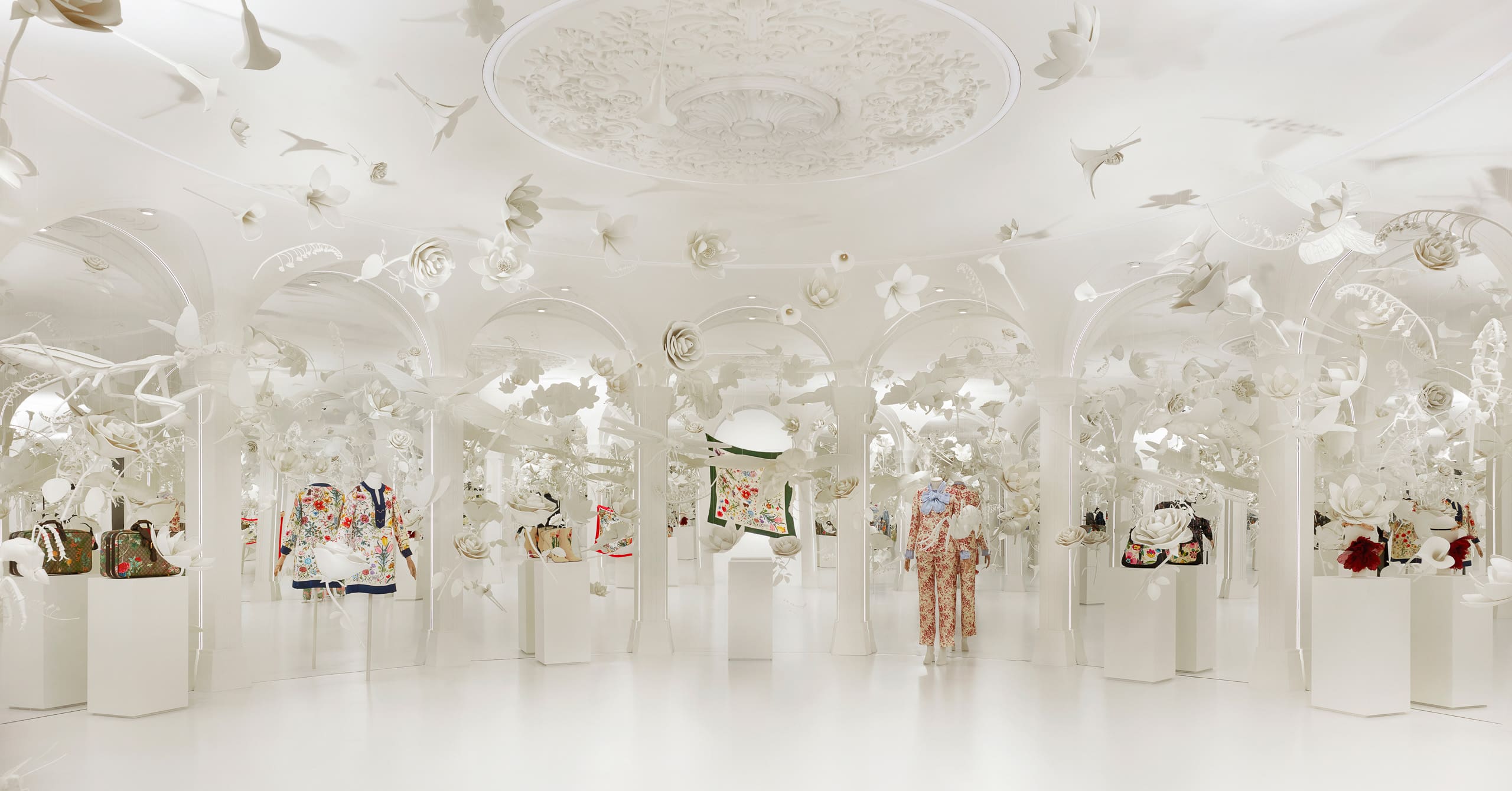Courtesy of Gucci
Ai Tominaga. Courtesy of Gucci
Gucci Cosmos curators Maria Luisa Frisa and Es Devlin argue for the importance of a fashion archive—not just for Gucci, but for all of fashion.
The system that we call archive functions as a way to preserve memories. First-person accounts, artwork, and literature all hold something of value in documenting our histories, setting the scene of the past. But the story that fashion tells is arguably the most honest, with a sense of style (and fashion design) being one of the more accessible mediums of self-expression.
While the Met Gala is elaborate in nature, with its annual display of spectacle each year, it functions to fund The Costume Institute, one of the premier establishments of fashion preservation globally. Because the exhibitions that they curate are specific—its themes the likes of Notes On Camp, China Through The Looking Glass, and Heavenly Bodies—in the preservation and presentation of these garments, an archive can also exist to remold memory. Or, at least, allow us to look back on these ideas and designs with a critical eye.
In April, Gucci unveiled its exhibition “Gucci Cosmos” in China, celebrating more than one hundred years in a constellation of “ideas, inventions, geographies, clothes, accessories, and objects” that remain paradigmatic of the brand. Curated by theorist Maria Luisa Frisa and artist and production designer Es Devlin who are both renowned in their fields, the exhibit is a glittering expanse of the Italian luxury house’s signature pieces throughout its hundred years in fashion.
It was here where Frisa and Devlin discussed the importance of a fashion archive. “I think the nature of humans is we are always attracted to the new. We are addicted to the new,” Devlin says at the Gucci Cosmos press conference. “However, we know on a global planetary scale [that] the new cannot be infinite on a finite planet.”
She adds, “It’s of absolute importance that we go back in time—that we look back at design ideas and thinking that originated 100 years ago, or 60 years ago, or 20 years ago. And that’s the essence of our project, I would say.”
The brand notes the tethering of the two aspects of its universe: the “material nature” of an object and “the immaterial impulses of [its] creative vision.” Frisa explains: “The important thing was to be able, on the one hand, to create a conversation with such an empathetic and so immersive set-up and on the other to be able to choose the objects that had and have meaning for us, which have a value not only in relation to the history of Gucci but also to the history of us who inhabit the world.”
Clothes are, first and foremost, signifiers: of your beliefs, your culture, and your community. Fashion will always have its connotations of fantasy and frivolity, but an archive can give it context as a means of protection and self-preservation. The ensembles graduate from a fleeting state of being to what a celebration of the outer self meant at a certain point in time.
Devlin quotes a phrase that actually comes from within the Gucci house: “It says, ‘An archive is not a dead, cold, clinical indexed mausoleum, it’s a living organism—a living breathing organism,’ and that’s what we wanted to express.”
- The TAYO Fashion Showcase: A Celebration of Filipino-Japanese Friendship Through Design
- Filipino History, Fashion, and Identity: As Told Through Hats
- Patrick Coard On Finding Unlimited Creativity and His Latest Exhibit “The King’s Gambit”
- Jennie Kim Sings An Unreleased Single And Shows Off Her Jazz Vocals In Tokyo






